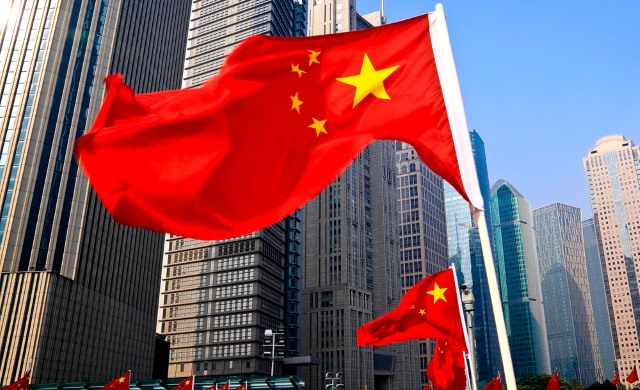The tide is turning for Chinese brands in Europe

Whilst recent attention in the payments industry has been on China as the next e-commerce frontier -- with Alibaba’s Jack Ma recently courting US businesses to cross the border -- we are starting to witness the rise of Chinese companies breaking into European markets.
Driven by the hunger of fast growth and the increasing acceptance of customers to purchase online internationally, Chinese brands are keen to get a slice of the European market and bring their offerings to a new audience. And it’s not just the big companies that are crossing borders. With analysts at Bernstein predicting that Lenovo and Huawei will emerge as world class brands in the next few years, we are also starting to see smaller players getting in on the action, including smartphone manufacturer Xiaomi that is already making headlines overseas since launching in the UK in June.
Shrugging Off Stereotypes
But is Europe ready to accept Chinese brands and buy into their proposition? Despite China being the second largest economy in the world -- after the US -- and the largest exporter, there is still a stigma attached to Chinese products among western consumers and businesses.
Stereotypes of mass produced, low value, low quality goods still hamper Chinese brands, making it difficult for them to make inroads into the western world. Indeed, according to a study by Millward Brown, only 20 percent of consumers worldwide can name a Chinese brand.
Over the last decade, negative ratings of China have increased from 32 percent in 2005 to 42 percent in 2014 according to a poll for the BBC World Service. This is largely due to human rights issues and military power which has damaged China’s international status and image, according to Jin Canrong, a senior academic in international relations at Renmin University of China in Beijing.
However, despite these negative perceptions, Chinese companies are starting to emerge as serious players in key global industries, with technology company Lenovo generating over 50 percent of its revenue from overseas sales, and home appliance maker Hisense attributing a third of its revenue to international sales in 2013.
Opportunities on Offer
The growing success of household Chinese names in the global market place indicates that the negative connotations of "Made in China" could be changing. In order to capitalize on this new mind set, businesses of all sizes across all industry sectors need to be armed with the tools to facilitate sales and speak the language of their customers, wherever they are based.
With up and coming Chinese brands, like Xiaomi, keen to expand into European markets quickly and aggressively, overseas consumers are starting to take notice of the innovation and hi-tech qualities that they can offer. This could signal the start of a wave of Chinese businesses dipping their toe in the European market.
Smoothing the Path to European Sales
Understanding and acting on each European country’s differing cultural and social habits is key for Chinese companies looking to impress this potentially lucrative European customer base.
Each country has its own culture, personality and language and those that take the time to research customer behaviour will reap the benefits at the checkout. Attracting European shoppers to buy their products will, of course, be their biggest challenge, but many Chinese firms could fall at the final hurdle if they don’t know how online shoppers in each country prefer to pay. Cultural, political and economic influences in each country will play a huge factor in how each region prefers to pay. In fact, it could mean the difference between brand advocacy and basket abandonment at the checkout -- not a good start for those wishing to profit quickly from the European market.
A great example of this is demonstrated by HSBC, whose backbone of its global business is built on understanding local markets and customers to build brand loyalty. The same applies to Chinese brands looking to conquer overseas markets. There is no point in having the most innovative, hi-tech product on the market if your customers fail to make the purchase due to a lack of confidence in the payment methods available.
Offering a variety of payment options relevant to each country is vital, as well as optimizing the language and other national settings, such as how the date or address is displayed. Consumers should be in no doubt about how they’re paying for their goods when they arrive at the checkout. Remaining compliant with local rules, laws and regulations ranging from consumer protection to tax and payment acceptance must also be a key consideration, as each market will be different.
To continue the momentum that Chinese companies are starting to build overseas, it is imperative that they speak the language of the local market they are looking to do business in. Understanding SEPA regulations and facilitating payments via not only debit or credit cards, but more local methods including iDEAL, Przelewy24, Boleto Bancario or SOFORT, will give buyers confidence in making a purchase and connecting with that brand for the long haul.
With perceptions of Chinese brands changing, Payment Service Providers (PSPs) have a huge opportunity to help local merchants capitalize on this.
By working with a global payment specialist, PSPs can meet local demands and become a trusted advisor for Chinese merchants, to help them take advantage of a potentially lucrative market that is ready and waiting to see what China has to offer.
Ralf Ohlhausen is chief strategy officer at PPRO Group.
Published under license from ITProPortal.com, a Net Communities Ltd Publication. All rights reserved.
Photo credit: ArtisticPhoto / Shutterstock
